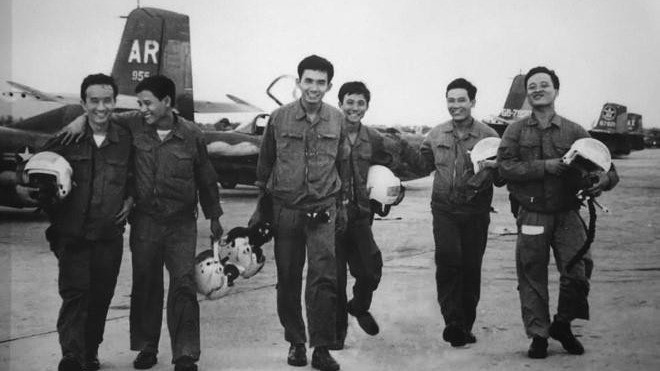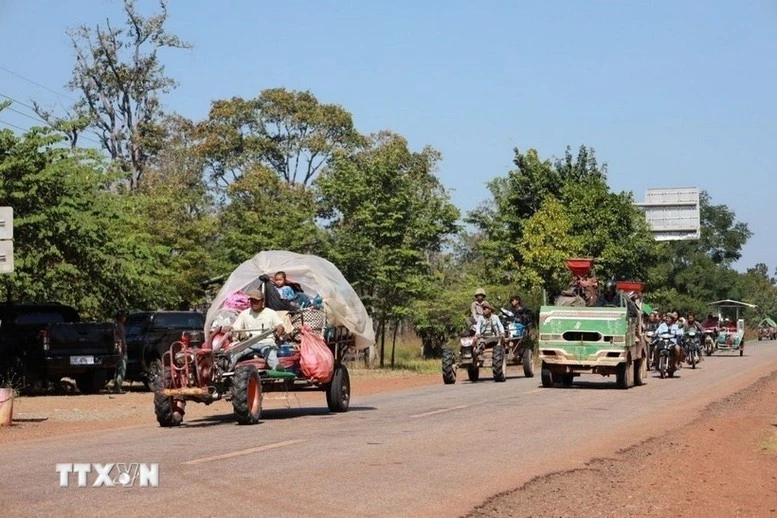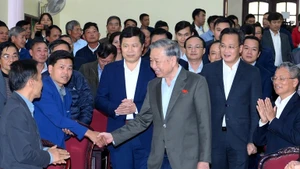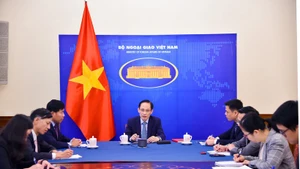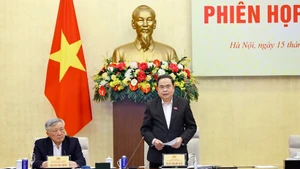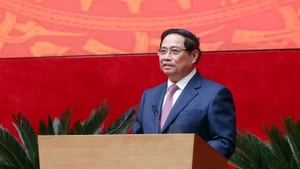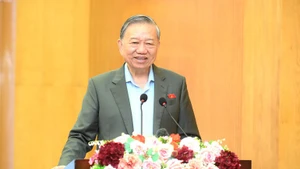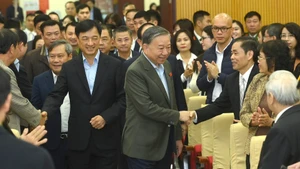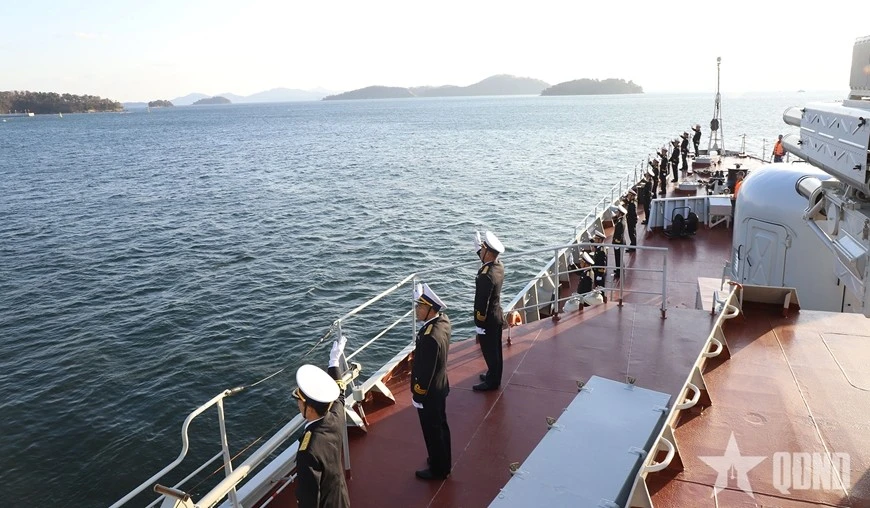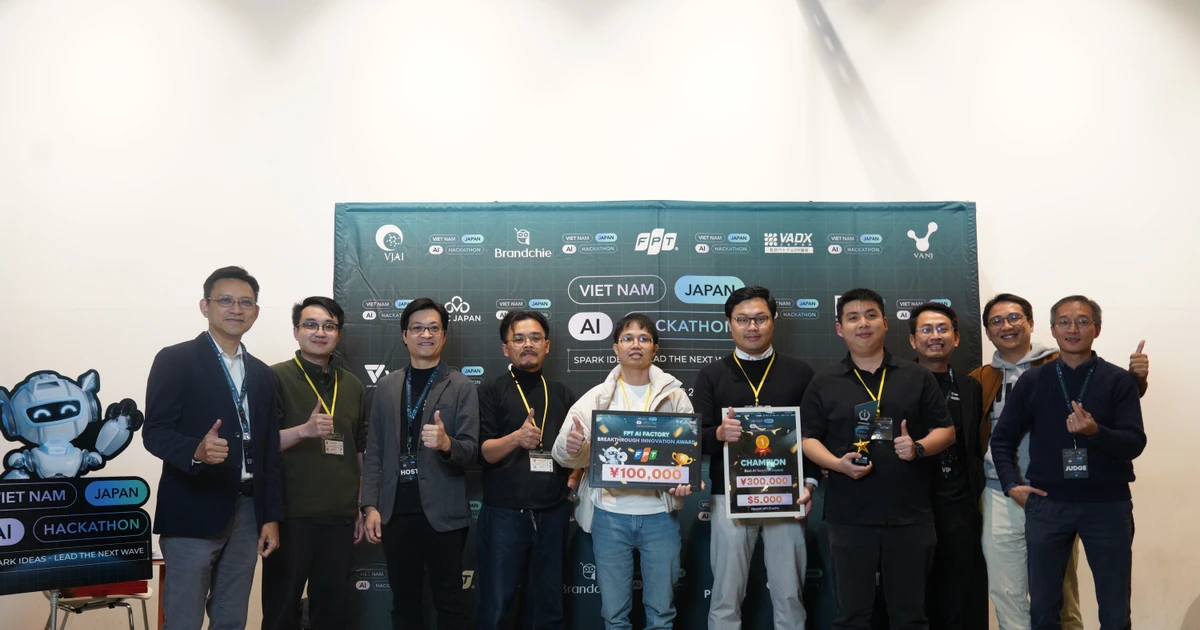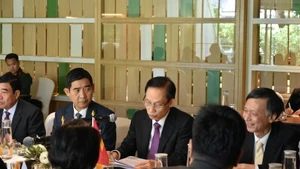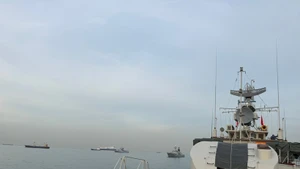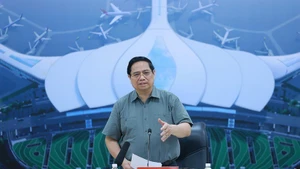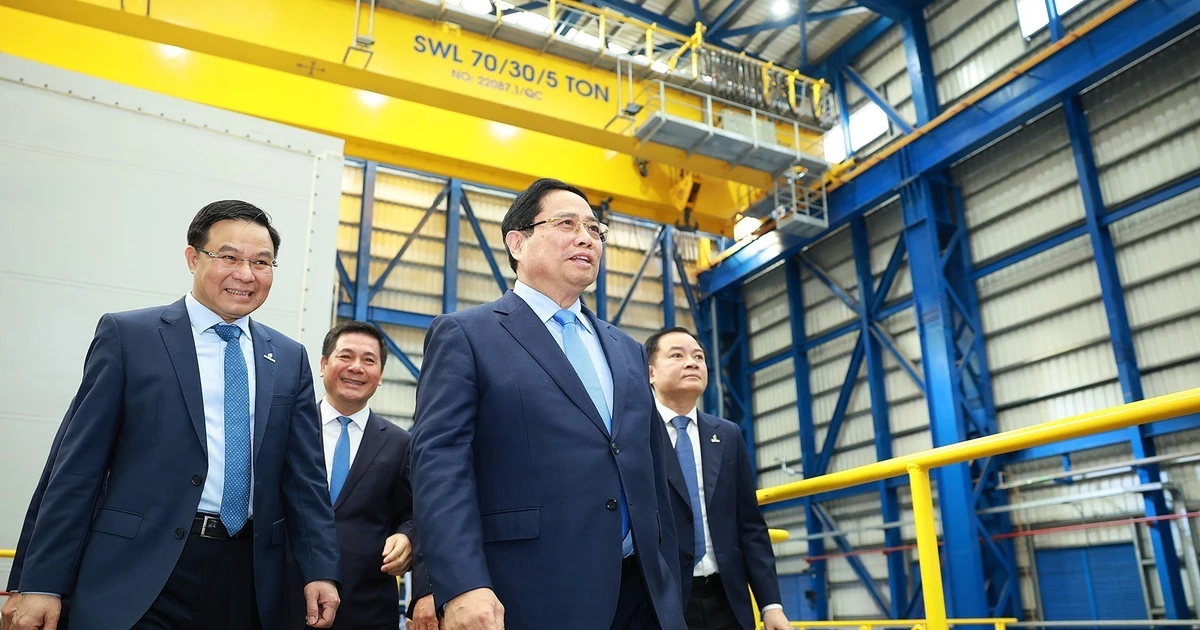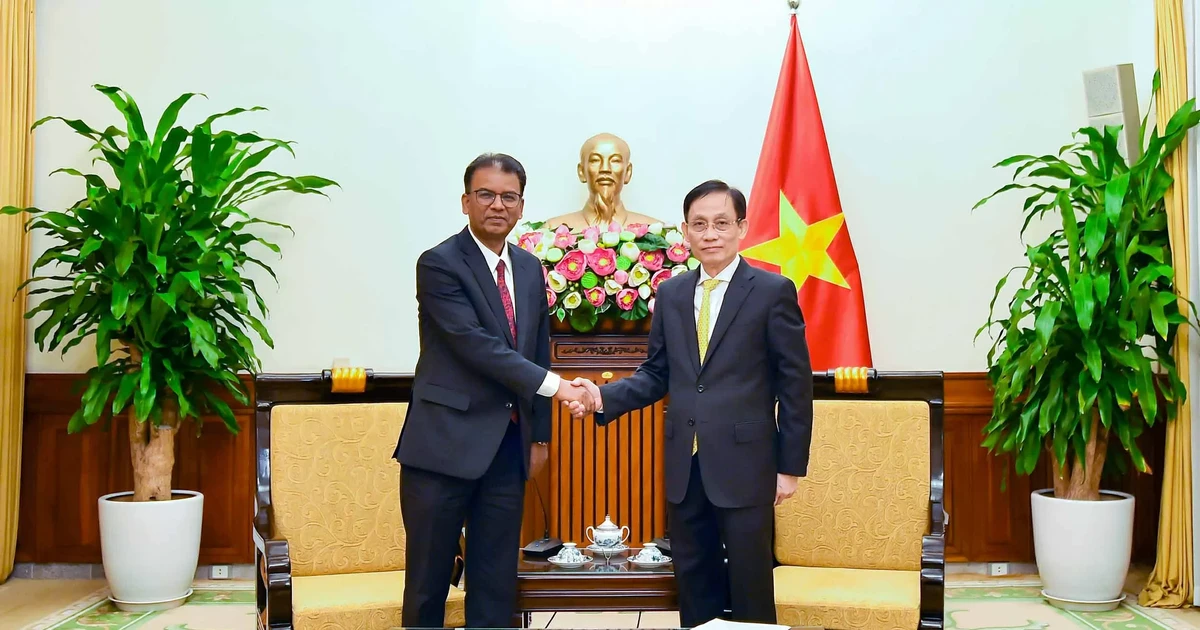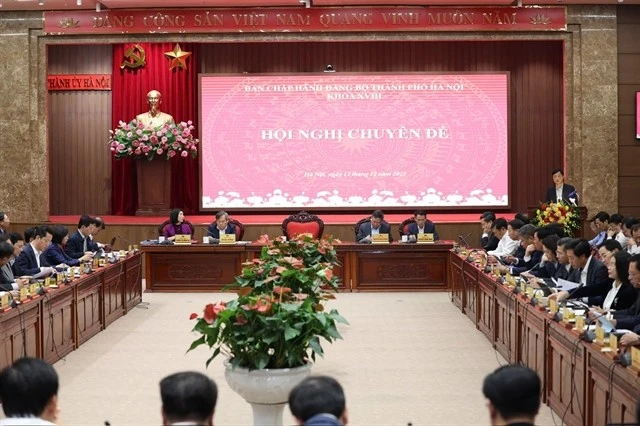On the eastern front, on the morning of April 28, the 325th Division’s 46th Regiment led the division’s formation, advanced along the road from Long Thanh to Nhon Trach, consecutively destroying enemy defensive clusters at Ben Sang, Phu Hoi, and Long Tan and clearing out enemy control structures in villages along Route 25. On the afternoon of April 28, with tank and artillery support, the regiment attacked and took control of Nhon Trach District. The division defeated enemy counterattacks in the Nhon Trach area, creating conditions for the corps’ artillery to move in and capture firing positions targeting Tan Son Nhat Airport.
Artillery soldiers and rear forces of the 325th Division continuously repelled counterattacks by enemy infantry and naval forces advancing from Cat Lai Base via rivers. In the Long Tan - Phu Hoi area, the fighting was most intense. Many close combat battles took place in orchards and flooded rice fields. By 3 pm, the 101st Regiment had moved up to coordinate pursuit operations, clearing out enemy forces.
On the night of April 28, the long-range 130mm artillery batteries of the 164th Brigade advanced into Nhon Trach to organise firing positions, preparing to strike Tan Son Nhat Airport and targets within the city. Heavy artillery from the 84th Artillery Regiment, along with 37mm and 57mm anti-aircraft artillery from the 120th and 75th Battalions, moved into Nhon Trach, ready to attack Tuy Ha Citadel, Cat Lai Naval Base, Saigon Port, and to hunt enemy vessels on the Long Tau and Dong Nai Rivers, thus cutting off waterways from Saigon to the sea, while preparing to attack enemy aircraft and protecting the advancing formation of the 325th Division.
On the southeastern front, on April 28, the 341st Division used the 55th Artillery Regiment to contain enemy artillery positions. The 7th Infantry Battalion, reinforced with four tanks and coordinating with the 4th Battalion, broke through to Ho Nai but was firmly blocked by the enemy and had to halt to reorganise the breakthrough. By the afternoon of April 28, our soldiers only reached Ho Nai 1 Hamlet.
Many fierce battles took place in the town centre. Enemy forces, relying on fortifications and obstacles, fought back frantically while our soldiers had to both fight the enemy and protect civilians, causing our advancing spearheads to progress slowly. The 6th Division, having missed its target, allowed the enemy to concentrate at Long Lac - Ho Nai. The 7th Division together with the 52nd Brigade advanced behind the 6th Division’s formation, positioned south of Route 1, preparing to serve as the corps’ deep penetration force.
On these fronts, on the night of April 28 and the early morning of April 29, the Z24 Commandos captured Rach Ba Bridge, Long Xuyen Hamlet and held the bridge. Given the favourable developments, Z19 seized enemy vessels and advanced into Rach Dua Port. Subsequently, Z24 and Z29, together with the 3rd Division and the Vung Tau City military force, captured the Nui Lon radar station, mobilised the masses in surrounding villages to hunt down the enemy, and completely liberated Vung Tau.
On the northern front, at 5 pm on April 28, with artillery and mortar support, a detachment of the 27th Regiment of Division 320B attacked enemy positions in the Ba Nghia slope area. After 3 hours of fighting, we completely controlled the battlefield, dominating the road section from Ba Nghia slope to Binh Co. Afterwards, the unit continued to advance towards Lai Thieu. By April 28, Division 320B had manoeuvred to a position 7 km north of Binh Chuan, not yet reaching the intermediate line as prescribed. During this same period, Thu Dau Mot armed forces coordinated to liberate southwest Ben Cat and southwest Tan Uyen. Meanwhile, the 312nd Division surrounded Phu Loi, blocked Route 13, and contained the enemy’s 5th Division.
On April 27 and 28, the 113th Commando Regiment, along with a battalion from the Gia Dinh Regiment, captured Binh Phuoc Bridge and took control of the Korean Highway section from Binh Phuoc Bridge to Quan Tre. The 116th Regiment captured the Bien Hoa Highway Bridge. The Rung Sac Group 10 attacked the Phuoc Khanh security post and fired rockets at Nha Be Port; on the 30th, they captured Nha Be Port, seizing 126 vessels of various types. On the 28th, the 40th Company (from the 116th Regiment) captured Ben Go Bridge (Cat Lai). Group 10 commandos raided Phuoc Khanh post in Nhon Trach, organised a detachment to cross the river and attack the naval port but it was unsuccessful.
On the western and southwestern fronts, by the afternoon of the 28th, campaign artillery at Hieu Liem bombarded and disabled Bien Hoa Air Base, forcing the enemy’s III Corps headquarters to relocate to Go Vap. Units of the 232nd Corps advanced into the direct defence line of Saigon, capturing several objectives, cutting all water and land transportation routes, completely isolating Saigon. The 5th Division completely severed National Route 4 from Ben Luc to Long An. By the end of April 28, the 9th Infantry Division and several technical armament units had crossed the Vam Co Dong River to assembly positions at Bau Cong, My Hanh, and Duc Hoa. The 24th and 88th Regiments captured bases, expanded their foothold north of Can Giuoc, and controlled Route 5, preparing to advance into southern Saigon.
On the northwestern front, at 9 am on April 28, the 174th Regiment of the 316th Division defeated an enemy battalion from Dong Du and Cu Chi that was attempting to relieve Phuoc My and Trung Hung, then captured the Cay Chom security post, and subsequently defeated another enemy battalion counterattacking from Phuoc My. On the afternoon of April 28, the 149th Regiment surrounded Trang Bang, repelled an enemy battalion attempting to break the siege, and destroyed adjacent posts and security clusters, civil defence units, and isolated enemy firing positions. By 4 pm, we had tightly encircled the Trang Bang military area headquarters. On the night of April 28, the 149th Regiment drove back enemy forces at Trang Chua Bridge (east of Trang Bang). Also on April 28, at Bau Nau and Tra Vo, the 148th Regiment captured Cam Bridge and tightly surrounded and shelled Bau Nau, Tra Vo, Ben Keo, and Ben Muong.
On the night of April 28, according to the coordination plan, soldiers from the 198th Commando Regiment and the 64th Regiment of the 10th Division quickly advanced to Bong Bridge and Sang Bridge, taking up the position secretly and safely at the designated time.
At 4:40 pm on April 28, the Quyet Thang Squadron, consisting of five A-37 aircraft recently captured from the enemy, piloted by Nguyen Thanh Trung, Tu De, Nguyen Van Luc, Hoang Mai Vuong, Tran Van On, and Han Van Quang, took off from Thanh Son Air Base (Phan Rang) and precisely bombed Tan Son Nhat Airport. Commando forces fired over 400 rockets at Tan Son Nhat Airport, paralysing it and causing despair and panic among the enemy troops. American helicopters had to land directly on the rooftop of the US Embassy to evacuate people.
On the enemy side, by the afternoon of April 28, faced with our infantry’s advancing forces and effective artillery support, the enemy had to evacuate aircraft from Bien Hoa Air Base to Tan Son Nhat Airport, and the enemy’s III Corps headquarters abandoned Bien Hoa and fled to Go Vap.
On the night of April 28, the Regional Military Intelligence Department, closely monitoring enemy communications, reported two important pieces of information to the Campaign Command: during the night, the enemy’s General Staff had lost communication with the III Corps and other divisions. Also, on the night of April 28, Duong Van Minh instructed the Quan Tre Information Centre to try to maintain operations until 9:30 am on April 30.
That same night of April 28, after briefing on the general situation across all fronts, the Campaign Command ordered a general offensive into Saigon on the morning of April 29. The Campaign Command also instructed the 8th and 9th Military Regions to coordinate offensive operations and uprisings to liberate the Mekong Delta.
On the same day, our forces continued to liberate islands in the Truong Sa Archipelago, Ship 673 transported a detachment of Team 1 from the 126th Naval Commando Regiment to liberate Sinh Ton Island. Upon arrival, they found the enemy forces had already fled. At 10:30 am on April 28, we completely controlled the island.
On the enemy side, on April 28, Tran Van Huong handed over the regime’s presidency to Duong Van Minh, who was considered to “represent the third force” and have “politically neutral tendencies”.
